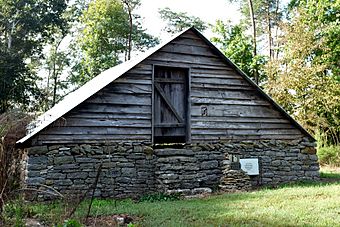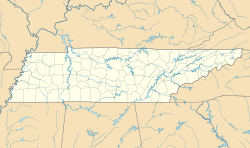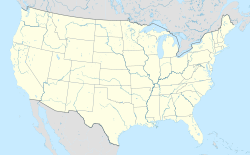Hufstedler Gravehouse facts for kids
Quick facts for kids |
|
|
Hufstedler Gravehouse
|
|
 |
|
| Nearest city | Linden, Tennessee |
|---|---|
| Area | less than one acre |
| Built | 1885 |
| NRHP reference No. | 87001038 |
| Added to NRHP | June 25, 1987 |
The Hufstedler Gravehouse, also known as Pinckney's Tomb, is a unique building near Linden, Tennessee. It's a special kind of grave shelter, or "grave house," and is thought to be the largest one in the entire state of Tennessee. This historic site is so important that it's listed on the National Register of Historic Places.
What is the Hufstedler Gravehouse?
The Hufstedler Gravehouse is a structure made from limestone and wood. It covers the burial spot of a local farmer named Pinckney Hufstedler and members of his family. Originally, it was planned as a small graveyard for about 10 to 12 burials. It had a strong wall of cut stone that was almost 5 feet (1.5 meters) high.
Why Was It Built?
Wooden walls and a roof were added to the structure. This was because Pinckney Hufstedler worried that water might get into his tomb. He also had a special request for his burial day. He wanted his body to be carried to the grave in a wagon pulled by white oxen, not mules.
A Special Building
This grave house is considered a rare example of 19th-century rural cemetery architecture. "Vernacular architecture" means it's a building style based on local needs and materials. It shows how people in the countryside built things long ago. The Hufstedler Gravehouse was added to the National Register of Historic Places in 1987.
Protecting History
In 2009, the Tennessee Preservation Trust listed the Hufstedler Gravehouse as one of the state's ten most endangered historic sites. This means it was in danger of falling apart. Its foundation was starting to fail. Efforts are made to protect and preserve this unique piece of history for future generations.



